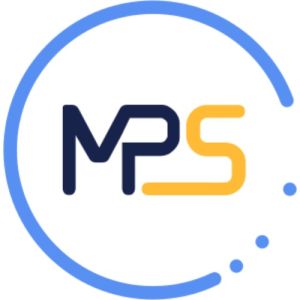A Learner-Centered Design Method for EdtechPosted by Multi Programming Solutions on December 6th, 2023 When planning the educational program development, it’s crucial to determine how your training is delivered and where to adopt a more customer-centered approach in your project. If you want to receive better course outcomes, it’s time to pay more attention to the student’s engagement. The more interest your Edtech app will generate, the higher retention you’ll get when learners start applying received skills in practice. The traditional instructor-centered approach considers trainees as “blank sheets” and tutors as experts and the only source of relevant information. But things change when students are placed at the core and become active agents in the educational process. They bring their own thoughts, experiences, skills, and ideas. And this impacts the way they adopt new information. This article explains what a learner-centered design is and how it benefits customers. Keep reading to learn more details and find inspiration for creating educational app software. Core principles of learner-centered design methodThe learner-focused approach in Edtech places students at the forefront of the process, focusing on their personal needs, interests, and abilities. This method recognizes trainees as active customers who acquire knowledge and new skills through individual experience. There are three basic principles an eLearning app development company considers to build a captivating educational environment:
A learner-centered design model incorporates diversity and inclusion. Exceptional features of educational apps ensure an accessible and respectful digital environment that provides equal opportunities for all the participants regardless of their abilities, cultural and linguistic differences, etc. The benefits of learner-centered designUnfortunately, many teaching methods provide learning for the sake of learning, which doesn’t result in high efficiency and retention. With a customer-centered design, students get what they want, how and when they need it. They prosper directly interacting with training materials on the one hand and drawing a line between the received data and personal experiences from a real-life on the other. We’ll discuss the advantages of student-focused education in more detail below. Motivates and engages studentsOne of the most significant pros of a learner-centered design curriculum is that it allows trainees to choose suitable topics, courses, and sources that better cater to their needs, educational style, and current level of knowledge. Such training gives users more freedom and responsibility, encouraging them to set personal goals, monitor progress, and receive better outcomes. Compared to the disadvantages of traditional methods, where tutors choose the type of material and ways of its representation, this personalized approach results in higher productivity and better knowledge assimilation. Adapts to different needsA learner-centered design model of curriculum allows for creating flexible and customizable training. That's why this method is perfect for the diverse needs of trainees and tutors. It helps organizations to change and improve the educational process according to the market demands, the latest trends, and students' expectations. Participants can choose the most suitable resources, contents, and methods to achieve their learning objectives. Encourage collaborationThe approach that places students at the forefront of the educational process allows for better communication and feedback between trainees and tutors. Participants can launch discussions, exchange ideas, and share personal experiences within the learning community. Such a strategy helps to find bottlenecks in teaching and fix them at early stages, change the style of content representation, or add additional information if the subject needs to be clarified for users. Improve resultsDesigning a learner-centered curriculum improves outcomes, enhances retention and overall student performance. During their journey, trainees can apply received knowledge in the real world, define how to overcome possible challenges, and make conclusions based on personal experience. Students can test what they’ve mastered in various situations and scenarios, which makes the approach more relevant and meaningful. Learner-focused methods ensure a deeper understanding of the materials and help to develop quick and thoughtful decision-making. Trainees become more prepared to handle uncertainty and adjust to changing conditions, which is crucial for their academic, professional, and personal lives. The best practices in learner-centered designTo make an example of a learner-centered design curriculum that will gain popularity among customers, you should reconsider the role of teachers. They will have to move further from simple information providers to supporters of students’ achievements. They should actively collaborate with trainees and comment on their feedback and progress, fostering motivation and engagement. Launching group discussions is another vital method to help students develop critical thinking, exchange their ideas, and solve problems faster. One of the essential features of the learner-centered design model is various assessment tools. Along with simple tests and quizzes, content creators can estimate students’ achievements through group work, presentations, portfolios, and personal projects. These methods can give a clear understanding of users’ abilities and analyze how they can apply the received knowledge in real-life scenarios. Edtech courses allow not only checking how participants adopt lessons but also advancing problem-solving skills and encouraging students to take responsibility for their education. Here are a few practical ideas of how student-focused design may be beneficial for its participants:
Like it? Share it!More by this author |


